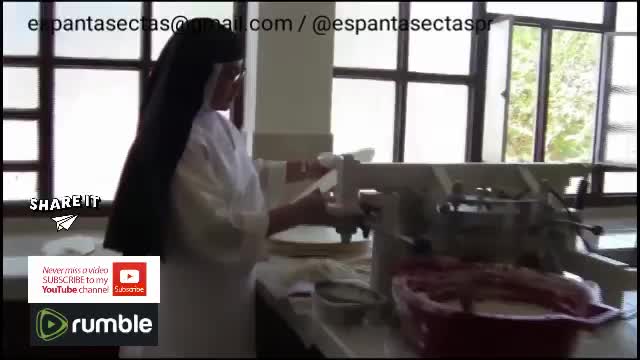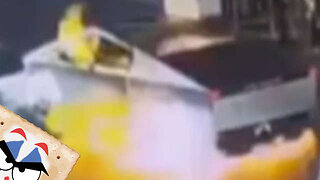Premium Only Content

MAKING HOST FOR EVERY CATHOLIC CHURCH MASS
The hosts "
From the Latin hostire, "to depart", "to break". The host is white, round and thin unleavened bread. Made with flour, it is transubstantiated in the Eucharist and is communicated by the president and the faithful. In the first centuries the daily bread "of each day" was used in the Eucharist. From the 9th century the unleavened bread began to be used. The host is also called “form”.
The hosts are unleavened bread discs, that is to say, no yeast has been used in their preparation.
Normally, this Eucharistic bread is made by hand by the priests and nuns themselves, although there are also bakeries specialized in its preparation.
The recipe for the hosts is very simple: water and a mixture of flour from different varieties of wheat. One of them, rich in gluten, is what gives the Form its corky texture.
The previously extended dough is heated between two plates at 170 ºC, so that the water evaporates. In this way, sheets of dry and crusty bread are obtained, which are stacked and moistened with water. Then, with a special dough cutter, the hosts themselves are cut, which are left to air for 5 or 6 days, before being packaged.
Credits:
# Catholic Apologetics (Learn from the Bible and defend your Faith)
**Under the fair use doctrine of US copyright statute, it is permissible to use limited portions of a work, including citations, for purposes such as comment, criticism, news reporting and academic reports. There are no legal rules that allow the use of a specific number of words, a certain number of musical notes, or a percentage of a work. The determination of whether a particular use qualifies as fair use depends on all the circumstances surrounding that fact. See the Fair Use Index and Reproductions of Copyrighted Works by Educators and Librarians (Circular 21).
-
 2:46:06
2:46:06
DDayCobra
14 hours ago $20.09 earnedCobraCast 199
81.4K19 -
 2:07:27
2:07:27
TheSaltyCracker
13 hours agoTrump Tower Bombed w/ Cybertruck ReeEEeE Stream 01-01-25
188K423 -
 8:15:58
8:15:58
FreshandFit
20 hours agoElon Musk BETRAYAL & Mass Censorship On X
234K102 -
 2:25:43
2:25:43
Darkhorse Podcast
21 hours agoLooking Back and Looking Forward: The 258 Evolutionary Lens with Bret Weinstein and Heather Heying
219K220 -
 5:50:16
5:50:16
Pepkilla
19 hours agoRanked Warzone ~ Are we getting to platinum today or waaa
142K7 -
 9:15:09
9:15:09
BrancoFXDC
17 hours ago $9.77 earnedHAPPY NEW YEARS - Road to Platinum - Ranked Warzone
117K4 -
 5:53
5:53
SLS - Street League Skateboarding
5 days agoBraden Hoban’s San Diego Roots & Hometown Win | Kona Big Wave “Beyond The Ride” Part 2
119K14 -
 6:03:57
6:03:57
TheBedBug
22 hours ago🔴 LIVE: EPIC CROSSOVER - PATH OF EXILE 2 x MARVEL RIVALS
114K9 -
 1:12:45
1:12:45
The Quartering
20 hours agoTerror In New Orleans, Attacker Unmasked, Tesla BLOWS UP At Trump Tower! Are We Under Attack?
178K292 -
 1:32:08
1:32:08
Robert Gouveia
22 hours agoNew Year TERROR; Trump Speaks at Mar-a-Lago; Speaker Johnson FIGHT
146K131